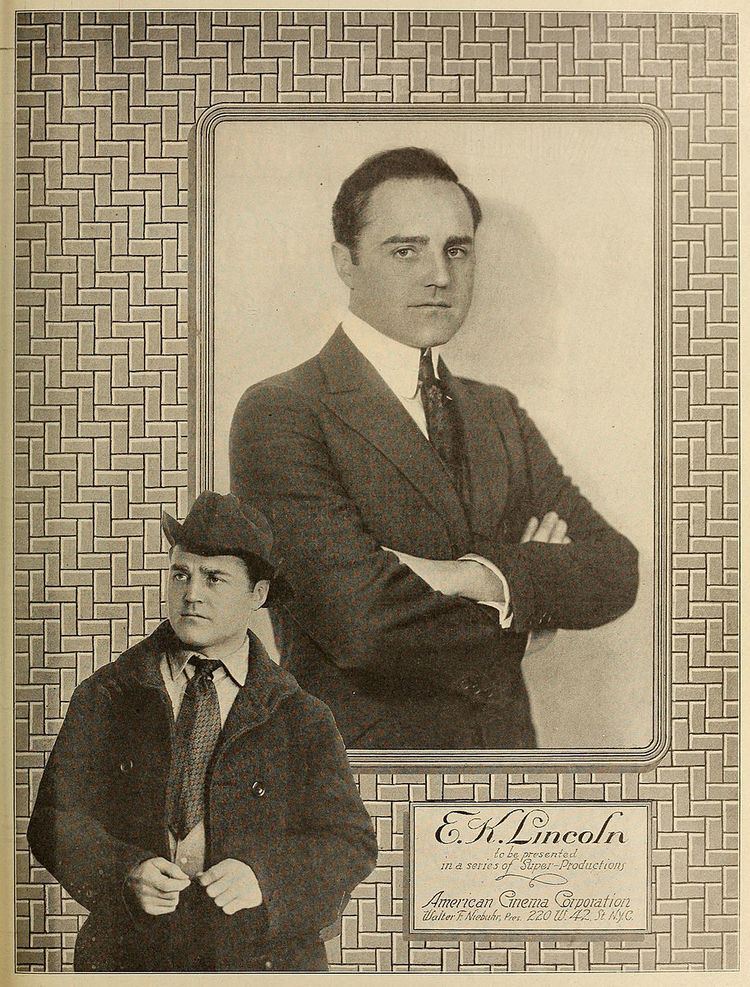Name E.K. Lincoln | Role Film actor | |
 | ||
Died January 9, 1958, Los Angeles, California, United States Movies The Light in the Dark, The Woman God Changed | ||
Edward Kline Lincoln (August 8, 1884 - January 9, 1958) was an American silent film actor and director. Lincoln appeared in over 65 silent films and was best known for movies like For the Freedom of the World (1917), The Light in the Dark (1922), and Man of Courage (1922).
Contents
Biography
E.K. Lincoln was born in Johnstown, Pennsylvania and died in Malibu, California.
Partial filmography
Grantwood studio
The history of cinema in the United States can trace its roots to the East Coast where, at one time, Fort Lee, New Jersey was the motion picture capital of America.
The Grantwood Studio, aka E.K.Lincoln Studio, was built in 1915 on Bergen Boulevard in Grantwood, just south of Fort Lee by Lincoln. Many of the greats of the early film world worked out of this studio and used various spots in the area for location work. The first production was The Fighting Chance in which Lincoln starred alongside Violet Horner, who also starred in The Girl from Alaska (1915).
Between 1916 and 1917, the studio was rented by Fox Film Corporation. In 1920 the United States Photoplay Corporation used it for the film Determination. In 1923, Peter Jones produced the film How High Is Up?.
According to Film Daily (June 1926), the first episode of The Leather Pushers (1922) with Reginald Denny was filmed there. After World War I many movie makers, including Lincoln, headed out to Hollywood where the climate enable them to film outdoors all year round. After talkies came into being in 1927, the studio continued to be used to make Italian and Polish language films.
By the end of the Depression, the studio was no longer for film production. The building burnt down the 1960s.
